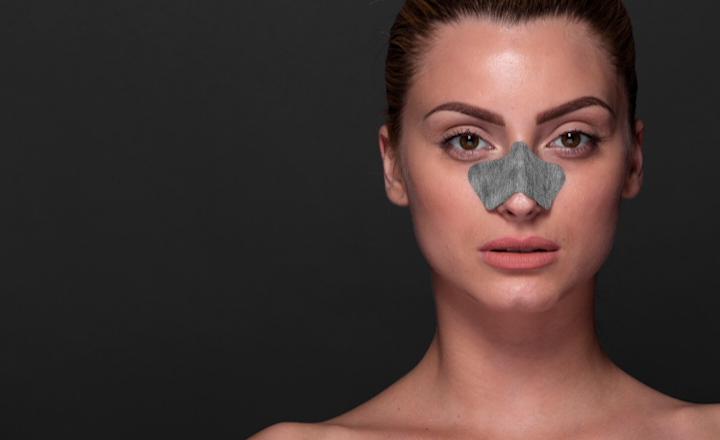
If you're planning a nose job or you've just had one, you’re probably wondering: how long do I need to wear this cast? It’s a fair question—after all, it’s right there on your face. The nasal cast is an essential part of your healing process, and knowing what to expect helps ease anxiety and keeps you on track for great results.
What Is the Cast Used for in Rhinoplasty?
After rhinoplasty, a cast is placed on your nose to protect it and keep the new shape stable. Think of it like a mold that holds everything in place while your nose starts healing underneath.
Surgeons typically use a lightweight material, like aluminum or plastic, lined with padding for comfort. It’s not bulky, but it’s firm enough to provide the support your healing nose needs.
How Long Do You Wear a Cast After Rhinoplasty?
You’ll typically wear a nasal cast for 7 days, but this timeline can vary slightly based on your surgery and how you heal. Some people have it removed as early as 5 days, while others may need to keep it on for up to 10 days—especially if bone work was extensive.
Here’s what determines how long you’ll wear the cast:
Type of Rhinoplasty
Closed rhinoplasty (incisions inside the nostrils) often leads to quicker recovery and shorter cast time.
Open rhinoplasty, which involves lifting the nasal skin, might require a bit more structural support post-surgery.
Bone Work or Reshaping
If your surgeon had to break or realign nasal bones (often done to fix a hump or narrow the bridge), you’ll need the cast on longer. The bones need time to “set” in their new position, much like a broken arm in a cast.
Healing Progress
Everyone’s body heals differently. Your cast will stay on until:
Swelling has gone down enough for safe removal
Your nose’s structure is stable
Your surgeon is confident it’s time
Surgeon’s Protocol
Each clinic or surgeon may have slightly different guidelines. If you had your rhinoplasty in Turkey, for example, your surgeon might coordinate cast removal during a post-op appointment before you fly home—usually around Day 7 or 8.
Why You Shouldn’t Remove the Cast Yourself
You might reach a point where the cast feels tight, itchy, or starts to lift at the edges. That’s when temptation creeps in. But here’s the deal: do not remove it yourself, no matter how annoying it gets.
Here’s why:
Your Nose Is Still Vulnerable
Right after surgery, your nose is:
Delicate
Unstable
Still forming scar tissue and new structure
Removing the cast too soon can:
Shift nasal bones out of place
Distort the surgical results
Cause uneven healing or deformity
Risk of Complications
A premature removal could lead to:
Bleeding
Increased swelling
Infection (if you pull off skin with the adhesive)
Visible scarring if the skin is damaged underneath
You Might Misjudge the Timeline
Even if it “feels ready,” that doesn’t mean it is. Only your surgeon can assess:
How well your nose has stabilized
Whether the skin underneath is ready to be exposed
If your healing is following the right trajectory
Professional Removal Is Painless and Safe
During your follow-up visit, your surgeon will:
Loosen the adhesive gently
Examine your nose before removal
Clean the area with sterile solutions
Provide aftercare instructions for the next phase
Removing the cast yourself skips all these important steps—and that’s a risk you don’t want to take after investing time, money, and trust into your rhinoplasty.
What Happens During Cast Removal?
Good news: cast removal is quick and painless for most people. Here’s what usually happens:
1. Your surgeon softens the adhesive with a solution or warm compress.
2. They gently lift the edges and peel it off.
3. You might feel pressure, but it shouldn’t hurt.
4. Afterward, they’ll check your nose and talk you through the next stage of healing.
Expect some swelling and bruising to still be present. That’s totally normal.
After the Cast Comes Off: What’s Next?
Once the cast is off, your nose won’t look “done” just yet. Here’s what to expect:
The shape may look a little strange or swollen.
Bruising around the eyes may still be fading.
Your nose might feel stiff or numb.
Don’t panic—your final results take several months to fully appear. Patience is key.
Tips for Caring for Your Nose While Wearing the Cast
Taking care of your nose during this stage is crucial. Here’s how to make it easier:
Keep the cast dry. No showers directly on your face.
Avoid heavy glasses. They can press on your nose.
Sleep with your head elevated to reduce swelling.
Don’t blow your nose. Use saline sprays if needed.
Also, avoid dusty environments, strenuous workouts, and anything that might cause trauma to the face.
Swelling After Cast Removal: Don’t Panic
Some swelling actually increases after the cast comes off—this is totally normal. The cast keeps some of that swelling down, and once it’s gone, the tissue can puff up a bit.
This typically goes away within a few weeks, and your nose will gradually refine over time.
Call your surgeon if:
The swelling gets worse instead of better
You notice redness or warmth (signs of infection)
You’re unsure if what you’re seeing is normal
Can You Speed Up Recovery After Rhinoplasty?
While you can’t rush nature, you can support your body:
Stay hydrated.
Eat clean, anti-inflammatory foods.
Don’t smoke—it slows healing.
Avoid alcohol during early recovery.
Rest well and manage stress.
Some people also use gentle lymphatic drainage massages after getting the green light from their surgeon.
Rhinoplasty in Turkey: What to Know If You’re Traveling for Surgery
The rhinoplasty Turkey trend continues to grow because of its affordability and skilled surgeons. But traveling for surgery means you need to plan carefully, especially regarding your cast and recovery.
Make sure you:
Stay in Turkey at least 10–14 days post-op
Book your follow-up appointment before leaving
Know what to do if you need help after you return home
Some clinics offer aftercare kits and remote check-ins—ask ahead of time.
Wearing a cast after rhinoplasty is a short-term step with long-term benefits. While it might feel inconvenient, it's crucial for protecting your new nose and ensuring the best results.
Stick with your surgeon’s advice, resist the urge to rush things, and remember: healing takes time—but your results will be worth it.
| < Prev | Next > |
|---|




